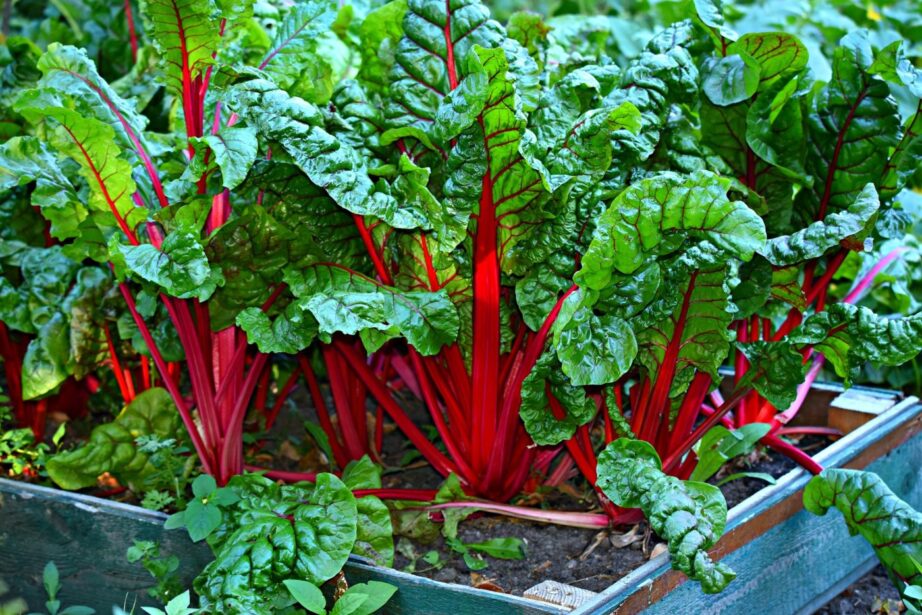Every gardener should try growing Swiss chard at some point. Whether you’re a beginner or experienced, the plants will reward you with a bounty of healthy, leafy greens with relatively little fuss.
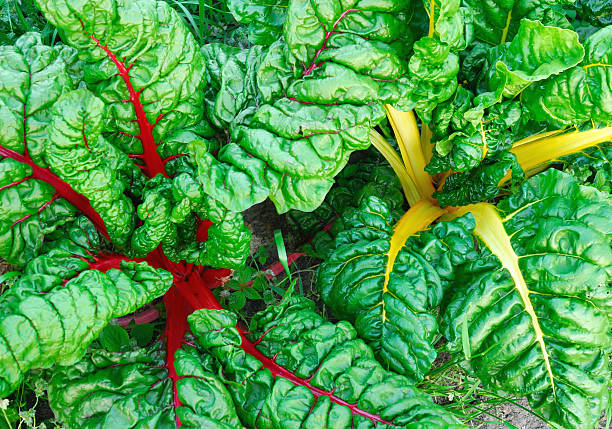
Swiss chard is similar to spinach, but has a more earthy flavor and comes in lots of bright colors to pretty up your vegetable patch. Like spinach, Swiss chard is rich in iron and other elements. It’s a great source of low-fat vitamin E, which we typically derive from fatty food.
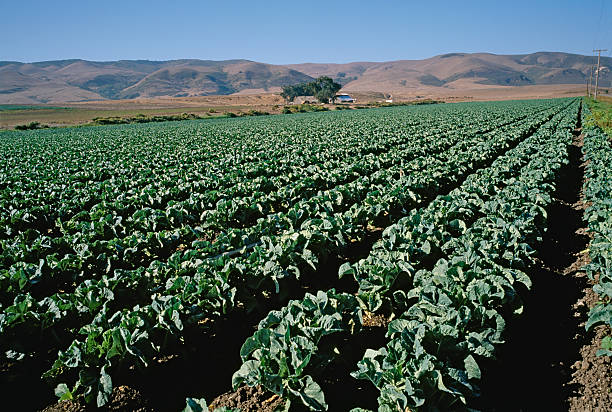
Swiss chard grows well in gardens or pots and is a prolific leaf-growing vegetable that’s quick to prepare for eating. Bonus: it’s also easy to hide in your children’s dinner for a sneaky health boost.
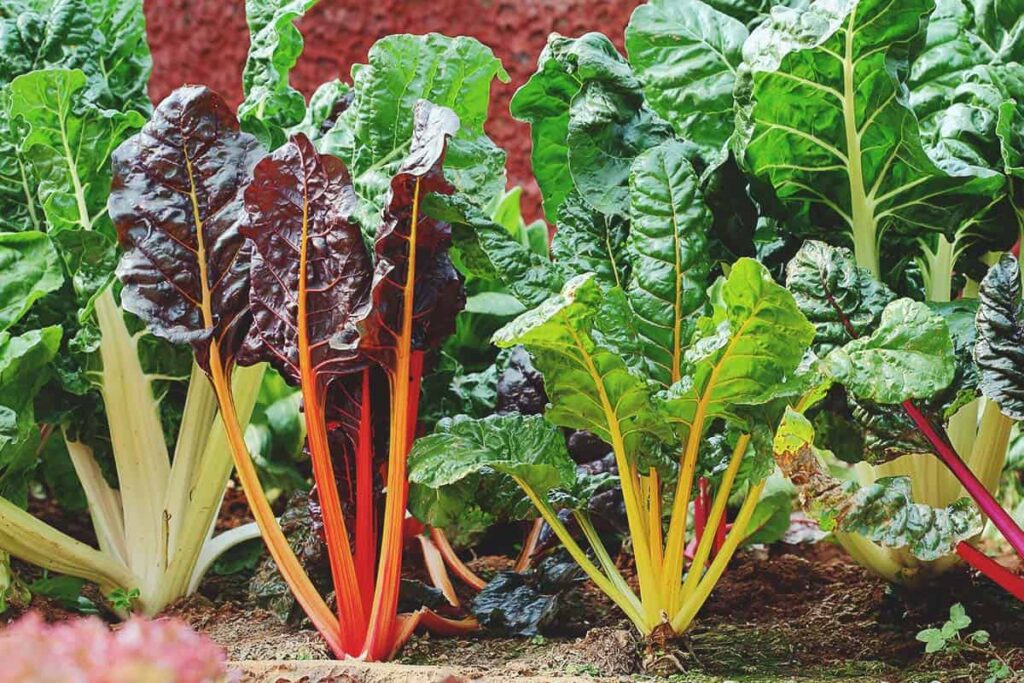
Varieties of Swiss Chard
There are lots of varieties of Swiss chard out there, ranging in color and size.
Green Lucullus
Green Lucullus is possibly the most common and well known Swiss chard. Originally an Italian heirloom variety, it has dark green leaves and white, crisp stalks. This is a nice variety if you live in a hot area because it’s more heat tolerant than some other types.
Orange Fantasia
As the name suggests, a pretty orange variety. It holds its color even after being cooked. Both beautiful and tasty.
Neon Lights
This colorful variety looks lovely on a sunny day because the red, orange, pink, and yellow leaves seem to glow in the sunshine. The leaves are particularly tasty when they’re young.
Peppermint
Peppermint is another common variety you’ll often see in stores. It has distinctive red and white striped stalks. It’s disease resistant and slow to bolt.
Barese
Barese is a compact growing Swiss chard. A dwarf variety, it has large tender leaves with white stalks and matures earlier than other varieties.
Magenta Sunset
This variety of chard has a milder flavor and bright pink stalks. It tends to bolt if it’s exposed to cool temperatures early on.
Oriole
Oriole has gorgeous golden stems with dark green leaves. It was named after the Oriole bird and adds beautiful color to the garden. It matures in 60 days and is heat and cold tolerant.
Fordhook Giant
This dark green chard has thick, tender leaves and is prolific even in the heat. It gets 16-inches tall and matures in 60 days.
Flamingo
As the name implies, this chard has lovely pink stems. It’s an heirloom variety that is slow to bolt.
How to Grow Swiss Chard
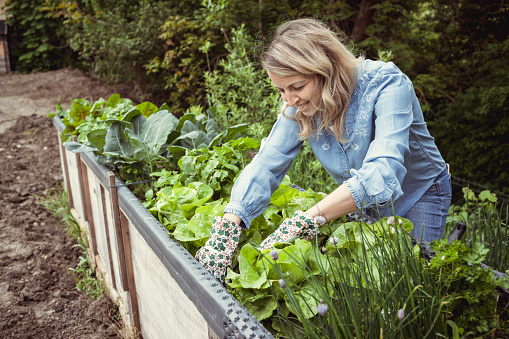
Growing Zones
Swiss Chard grows well in zones 2-10. It’s a great cold weather plant that also tolerates sunny, warm weather.
Sun Requirements
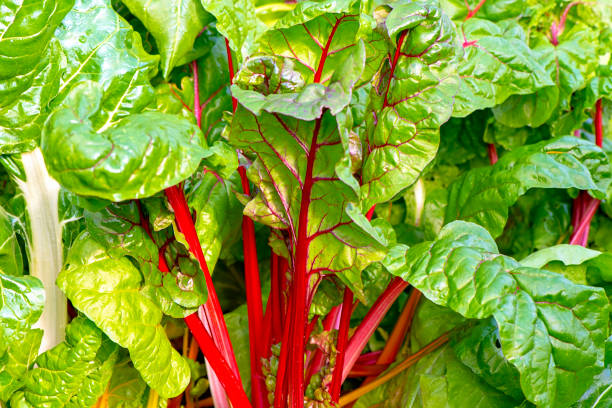
Swiss Chard likes full sun but will tolerate partial shade. I find that if the weather is cooler, full sun is best.
Soil Requirements
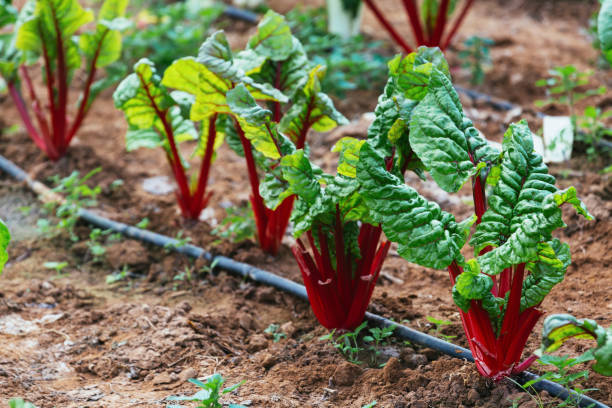
Swiss Chard likes fertile, well-composted soil that has good drainage. If your soil is particularly poor, apply a well-balanced fertilizer a week before planting. Chard prefers pH between 6.0-6.5.
When to Plant
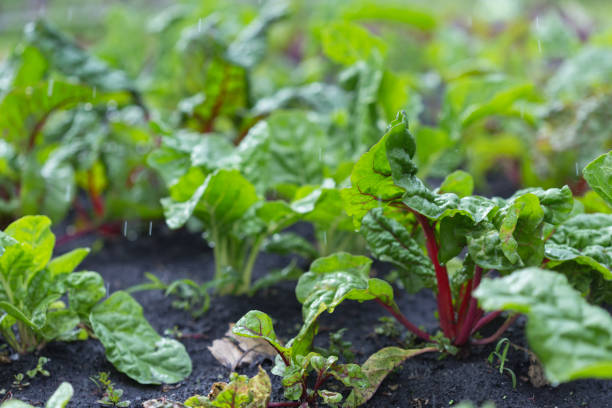
Plant your seeds about 2-3 weeks before the last frost date. Continue to plant a handful of seeds every 10 days or so for the first month to ensure you have a continuous supply. You can also plant a crop in the fall 40 days before the first frost date.
Container Planting
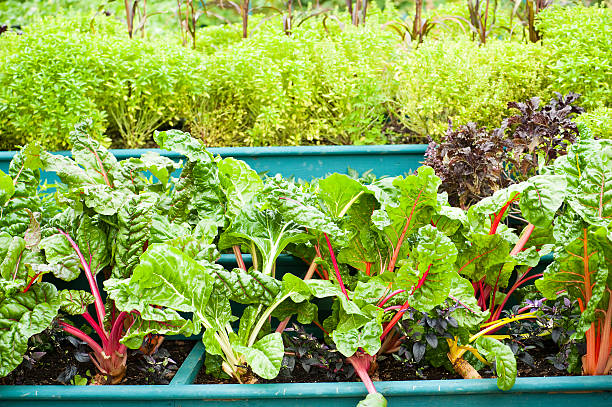
Swiss chard grows well in containers, and the benefit is you can place the pot near your kitchen for a quick harvest. Use a good quality container soil mix and slow release fertilizer specifically for potted plants.
Germinating Seeds
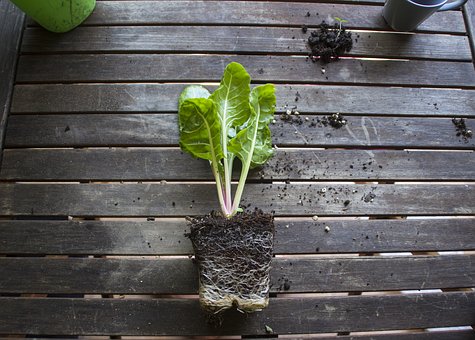
You can sow the seeds into the garden or individual pots. Plant seeds in the garden about a half inch deep.
Spacing
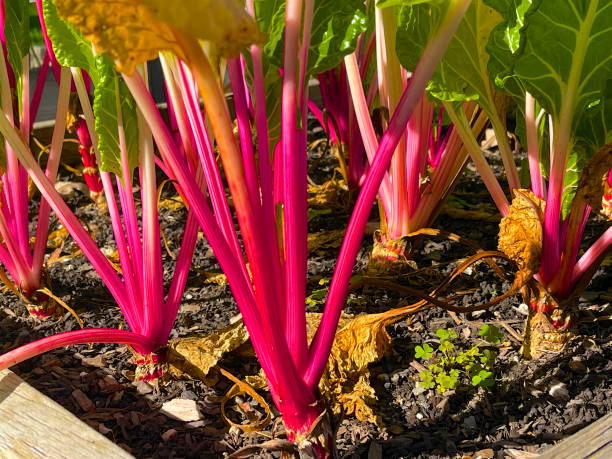
Plant rows about 18 inches apart because if all goes well, your Swiss chard will grow big and you’ll need plenty of airflow to help keep disease at bay.
Caring for Swiss Chard
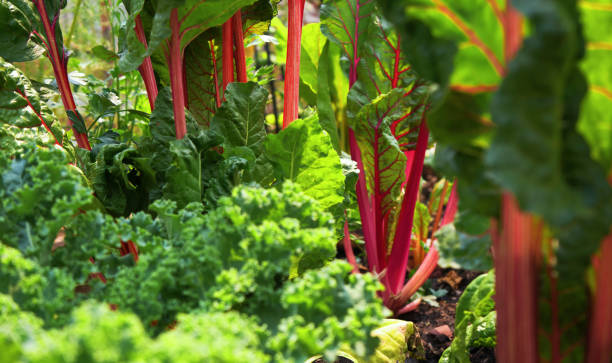
Fertilizer
Give Swiss chard a side-dressing of well-rotted compost or manure mid-season. You don’t want to apply too much fertilizer to these plants. With Swiss chard, bigger is not always better because some varieties will lose flavor if the leaves get too big. You want to go for deep, bright color and good condition rather than size.
Water
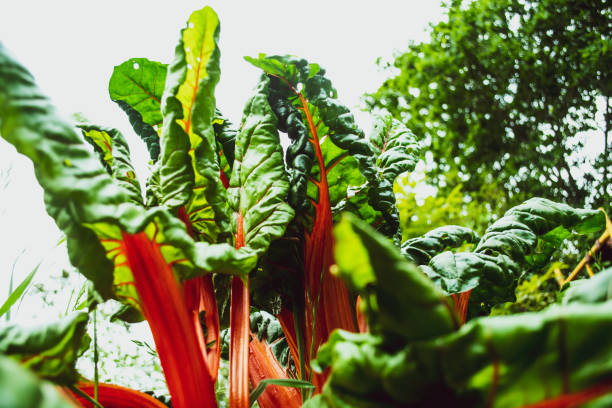
Consistent watering is key for Swiss chard. When the weather is hot it will appreciate a good soak, at least 1-2 inches per week. Water the soil around the base of the plant, not the leaves to avoid scorching in the hot sun and you don’t want to encourage disease.
Mulching
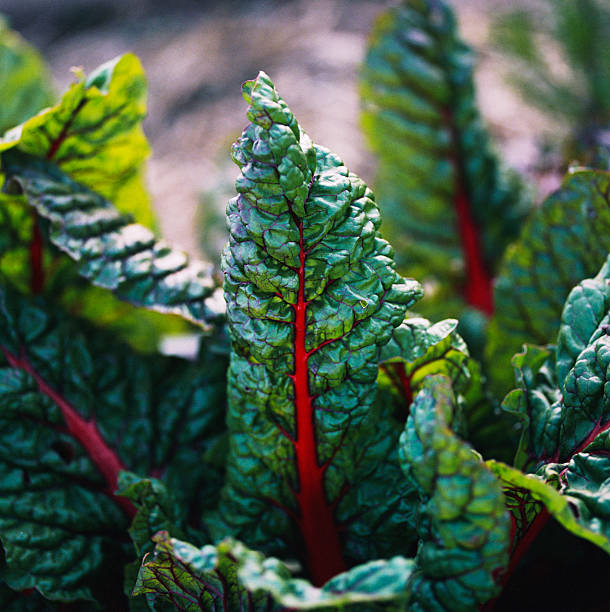
Give plants a layer of mulch to help conserve water, particularly in hot areas.
Common Problems and Solutions for Growing Swiss Chard
Like most leafy greens, insects love Swiss chard. It can also be susceptible to various diseases and problems. Good soil and garden maintenance will prevent a lot of issues.
Aphids
It seems like aphids attack just about every plant out there. The tiny pests suck the life out of your growing Swiss chard plants. Spray them off of your plants with a strong blast of water and then apply neem oil to keep them from returning.
Cutworms
Cutworms are the caterpillars of a variety of night-flying moths. They nibble through the base of plant stems. They can kill an entire row of growing Swiss chard plants in one night.
Stop them by putting cardboard collars around your chard plants, keeping your garden weeded to keep them from having a place to hide, and hand-pick the caterpillars at night.
Wireworms
Wireworms are the larvae of the click beetle. They live underground and nibble on the roots of plants. They’re difficult to kill. Use repeated applications of pyrethrin-based sprays to control them and introduce beneficial insects into your garden. You can also place traps in your soil.
Nematodes
Nematodes are microscopic roundworms that cause galls on the roots of chard. They can cause loss of vigor and reduced growth in plants. Purchase certified nematode-free plants and sanitize your tools between use. Also be sure to rotate your crops, meaning you shouldn’t plant brassicas in the same place for several years in a row. If you get them, solarize your soil to kill them off.
Snails and Slugs
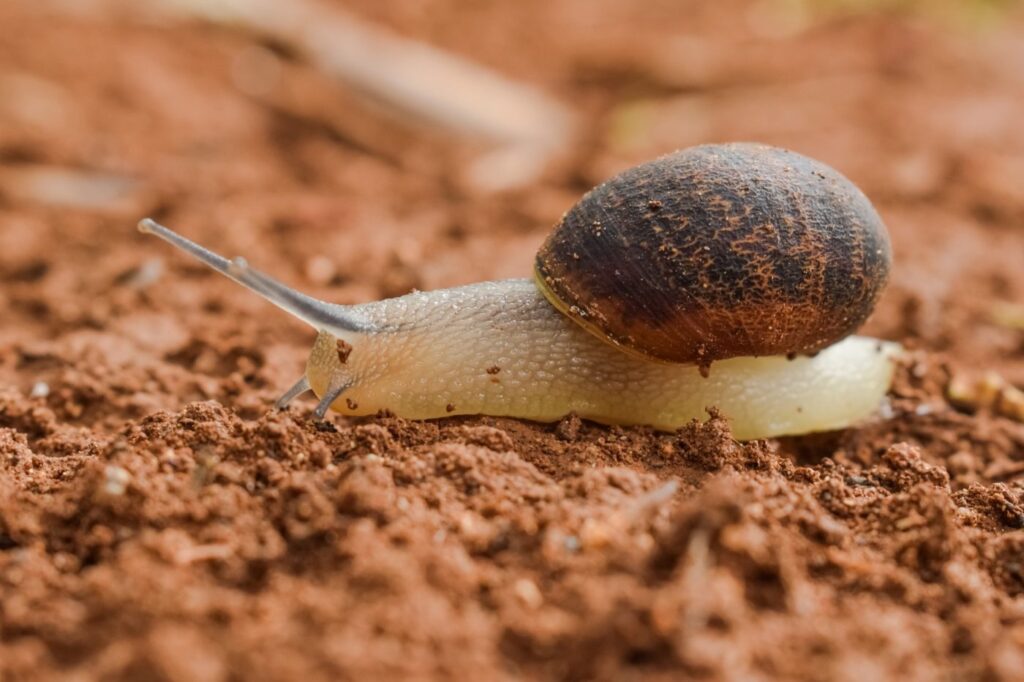
Regardless of the variety of slug and snail in your area, they’ll love your Swiss chard. They reproduce rapidly and will devour your lovely greens.
I find the best way to get rid of them is two-fold. Use a child and pet-friendly snail pellet. There are some available that are waterproof, so you don’t have to replace them as often.
Second, go out at night and hand-pick them off plants. Either squash them or do what I do and feed them to your chickens. If you’re going to do this, don’t poison the snails with pellets.
Leaf Miner
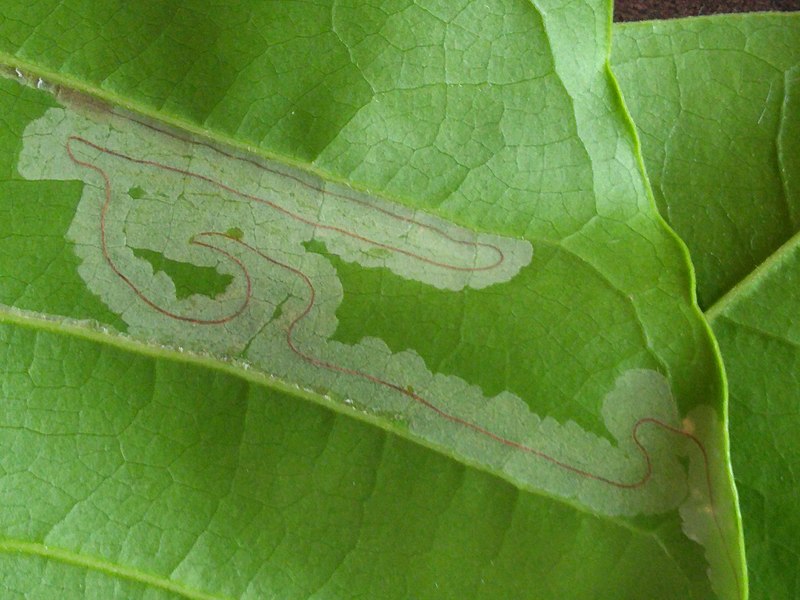
The damage caused by leaf miners shows up as tracks through your leafy greens. The larvae of this small fly burrow into the interior of the leaf. It’s unsightly, and no one wants to eat Swiss chard that looks like this.
I’ve found this to be my number one issue with chard. Use either a general pesticide or my preference, regular spraying of neem oil.
Flea Beetle

These little insects will leave holes in the leaves, often called shot holes. The flea beetle is usually too small to do much damage, but they can spread diseases between plants.
I prefer to use neem oil over insecticide for flea beetles, but you need to apply the neem oil early in the season to do much good.
Circospora Leafspot
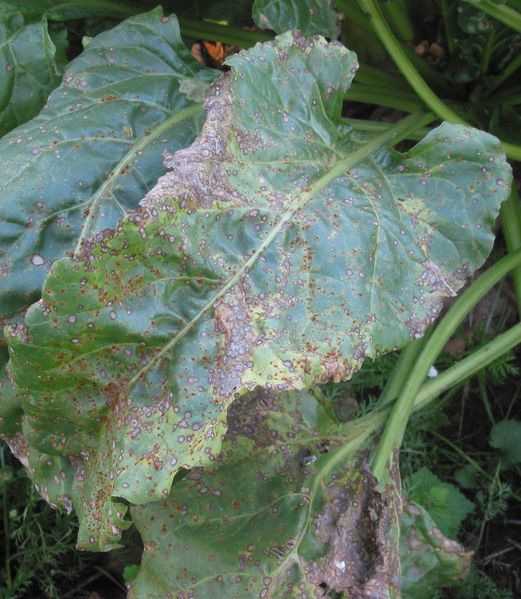
This is a fungal disease that affects most plants and forms unsightly spots on the leafy part of the Swiss chard. I’ve seen it get so bad to the point where the leaf appears to have a grey mold on the surface. Yield from the plant and quality are both affected. Eventually, the plant infects those around it.
There are several fungicides available for controlling leafspot, but I usually remove the whole plant and throw in the garbage, not the compost heap. Practice good soil hygiene and remove any debris and dead vegetation from your garden.
Downy Mildew
Humidity and excessive moisture are the most common cause of this disease. Avoid watering the leaves and ensure you have plenty of space between the plants. Pick leaves regularly to thin out the individual plants.
If you see the telltale sign of a grey powdery mark forming on the leaves, remove the affected parts and throw in the garbage. Then spray plants with a fungicide spray that contains copper.
Bacterial Soft Rot
Bacterial soft rot is one of the most devastating diseases out there for commercial growers. Once you have it, you can’t cure it, and it can destroy your plants.
Controlling water is your best option. Don’t overwater plants, apply water to the roots, keep plenty of space between plants, and water in the morning so plants can dry by the evening.
Sterilize tools between use, keep your garden beds free of weeds and toss any infected plants that you find.
Curly Tops
Curly tops is a virus spread by leafhoppers. Your best bet to avoiding this disease is to control pests using neem oil or pesticides.
Mosaic Virus
Mosaic virus shows up as spots on plants, wrinkled leaves, yellowing veins, and stunted growth. Treat plants with neem oil, keep garden beds weeded, sterilize tools between use, and destroy any infected plants.
Companion Plants for Swiss Chard
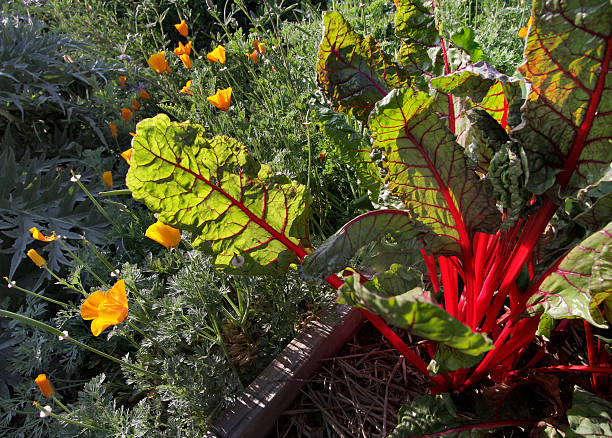
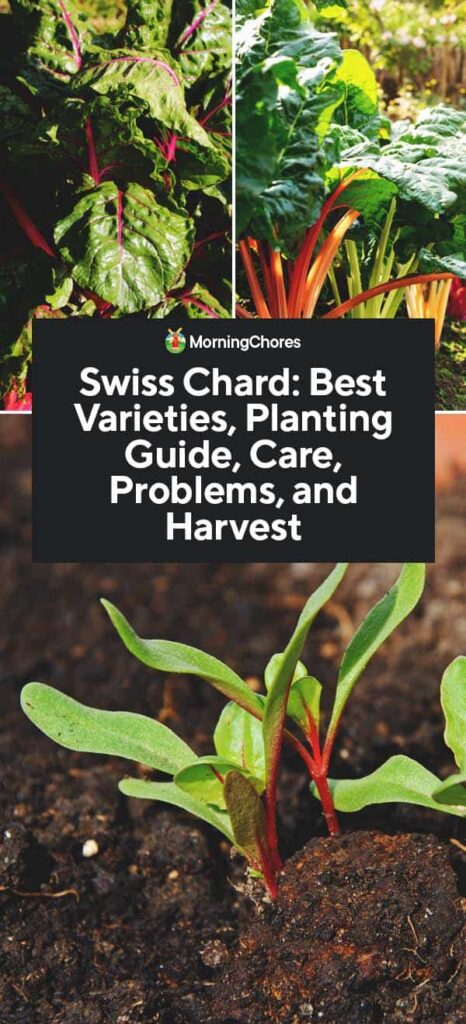
Try growing Swiss chard with:
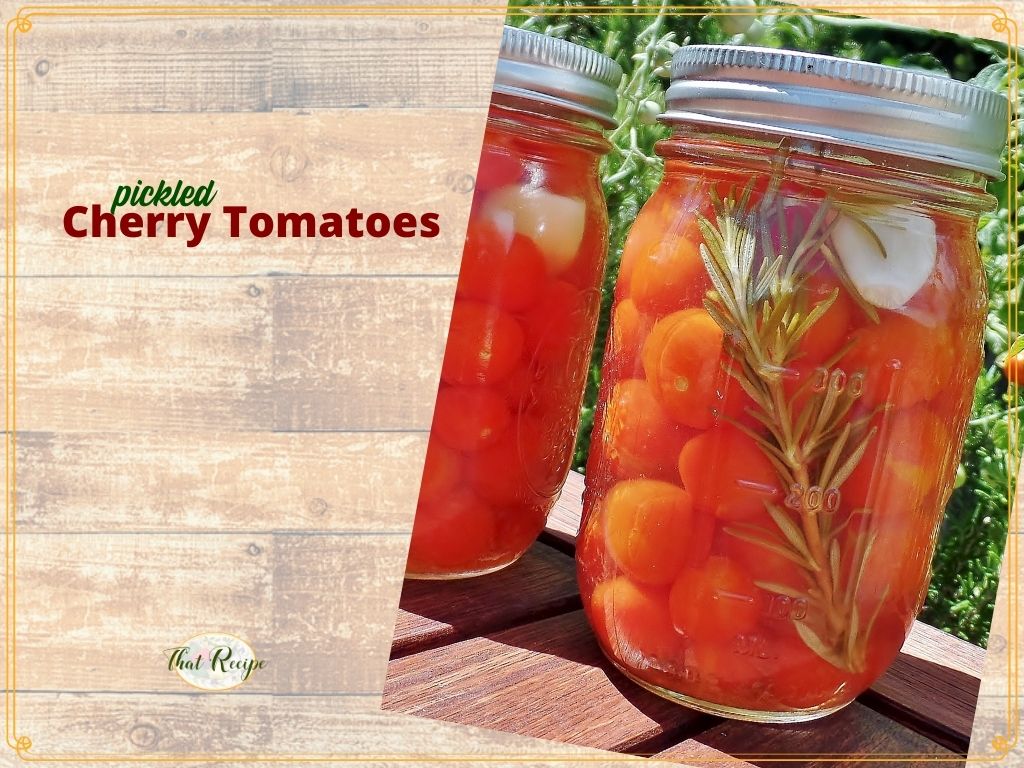
- Tomatoes
- Cabbage
- Broccoli
- Radish
- Lettuce
- Celery
- Onion
- Garlic
- Leek
- Chives
- Bean
- Peas
Don’t plant Swiss chard with:
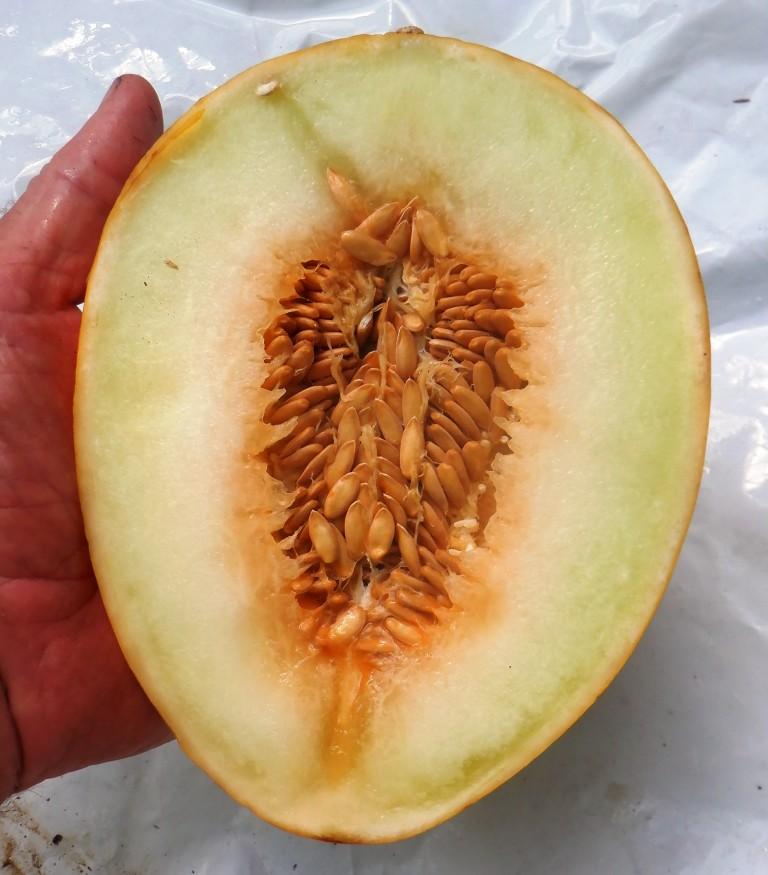
- Cucumber
- Corn
- Melon
- Potato
How to Harvest And Use Swiss Chard
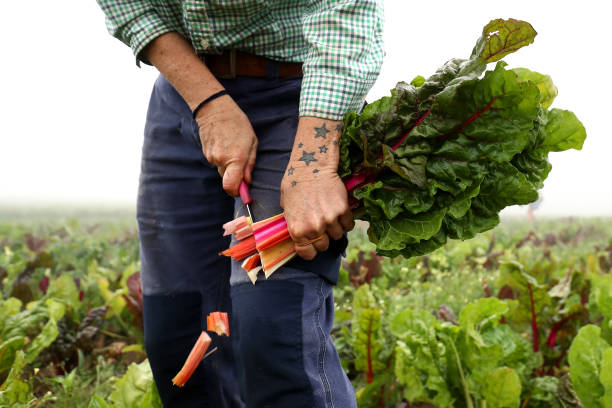
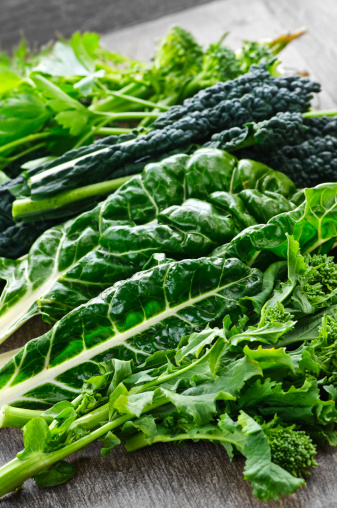
Use a sharp knife and cut the large, outer leaves at the bottom of the stalk about an inch off the ground. Don’t be tempted to rip or snap the stalk as this can damage the plant and allow disease into it. Plants are ready 40-60 days after planting when they’re 6-8 inches tall.
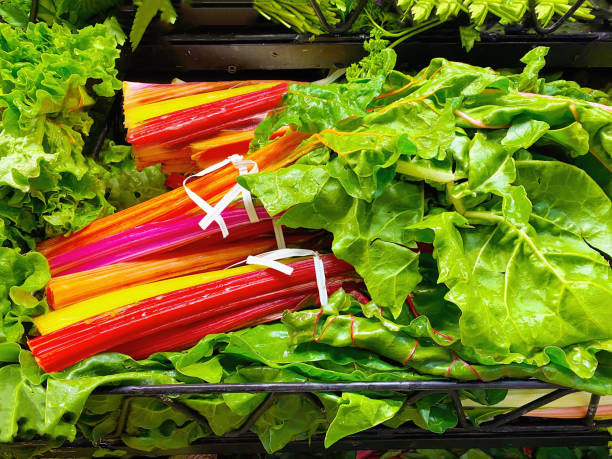
One of the great things about chard is you can pick the large leaves as you need them and allow the smaller ones to grow. A few healthy plants should last your family for the season, especially if you stagger your planting.

Swiss chard is versatile and tasty. Sautee it in a little butter and freshly ground nutmeg, add it to stews at any point in the cooking or eat it fresh, thinly sliced in salads. Add it to pasta dishes and use it in place of spinach.
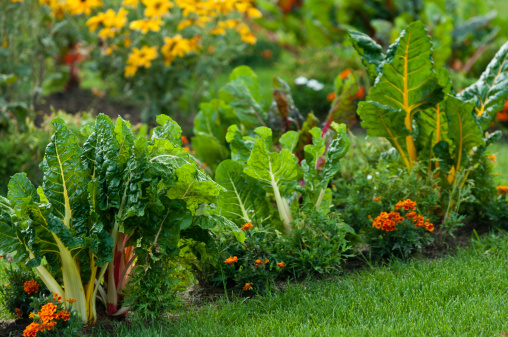
I put it in the blender with meat to make burgers and the kids have no idea it’s in there.
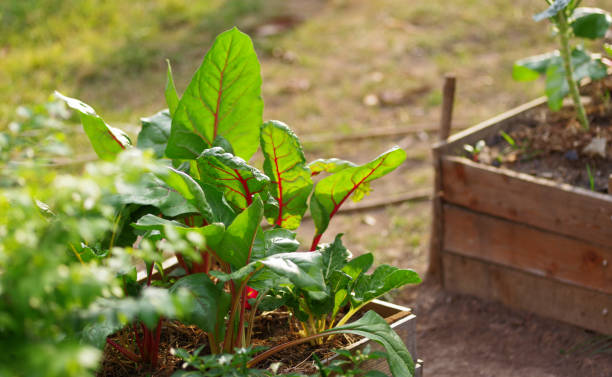
Have any tips for how to prepare this nutritious vegetable?
I USUALLY HAVE THIS ITEM FOR SALE CONTACT ME>> HERE



